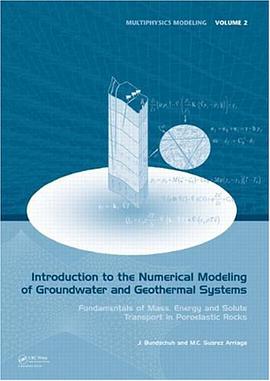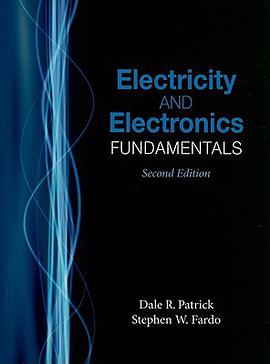

具体描述
"Bioprocess Engineering, Second Edition" thoroughly updates the leading introductory textbook on biochemical and bioprocess engineering to reflect advances that are transforming the field -- from genomics to cellular engineering, modeling to nonconventional biological systems. It introduces techniques with wide applicability in pharmaceuticals, biologics, medicine, environmental engineering, and beyond.
For Senior-level and graduate courses in Biochemical Engineering, and for programs in Agricultural and Biological Engineering or Bioengineering.
This concise yet comprehensive text introduces the essential concepts of bioprocessing-internal structure and functions of different types of microorganisms, major metabolic pathways, enzymes, microbial genetics, kinetics and stoichiometry of growth and product information-to traditional chemical engineers and those in related disciplines. It explores the engineering principles necessary for bioprocess synthesis and design, and illustrates the application of these principles to modern biotechnology for production of pharmaceuticals and biologics, solution of environmental problems, production of commodities, and medical applications.
作者简介
DR. MICHAEL L. SHULER is Professor in the School of Chemical Engineering, Cornell University. His areas of research include structured models, heterologous protein expression systems, cell culture analogs for pharmacokinetic models, in-vitro toxicology, plant-cell tissue culture, microbial functional genomics, and bioremediation.
DR. FIKRET KARGI is Professor of Environmental Engineering at Dokuz Eylul University in Ismir, Turkey. His current research includes bioprocessing of wastes for production of commercial products, development of novel technologies for biological treatment of problematic wastewaters, nutrient removal, and novel biofilm reactor development.
目录信息
Preface to the Second Edition.
Preface to the First Edition.
I. INTRODUCTION.
1. What is a Bioprocess Engineer?
Introductory Remarks. Biotechnology and Bioprocess Engineering. Biologists and Engineers Differ in Their Approach to Research. The Story of Penicillin: How Biologists and Engineers Work Together. Bioprocesses: Regulatory Constraints. Suggestions for Further Reading. Problems.
II. THE BASICS OF BIOLOGY: AN ENGINEER'S PERSPECTIVE.
2. An Overview of Biological Basics.
Are All Cells the Same? Cell Construction. Cell Nutrients. Summary. Suggestions for Further Reading. Problems.
3. Enzymes.
Introduction. How Enzymes Work. Enzyme Kinetics. Immobilized Enzyme Systems. Large-scale Production of Enzymes. Medical and Industrial Utilization of Enzymes. Summary. Suggestions for Further Reading. Problems.
4. How Cells Work.
Introduction. The Central Dogma. DNA Replication: Preserving and Propagating the Cellular Message. Transcription: Sending the Message. Translation: Message to Product. Metabolic Regulation. How the Cell Senses Its Extracellular Environment. Summary. Appendix: Examples of Regulation of Complex Pathways. Suggestions for Further Reading. Problems.
5. Major Metabolic Pathways.
Introduction. Bioenergetics. Glucose Metabolism: Glycolysis and the TCA Cycle. Respiration. Control Sites in Aerobic Glucose Metabolism. Metabolism of Nitrogenous Compounds. Nitrogen Fixation. Metabolism of Hydrocarbons. Overview of Biosynthesis. Overview of Anaerobic Metabolism. Overview of Autotrophic Metabolism. Summary. Suggestions for Further Reading. Problems.
6. How Cells Grow.
Introduction. Batch Growth. Quantifying Growth Kinetics. How Cells Grow in Continuous Culture. Summary. Suggestions for Further Reading. Problems.
7. Stoichiometry of Microbial Growth and Product Formation.
Introduction. Some Other Definitions. Stoichiometric Calculations. Theoretical Predictions of Yield Coefficients. Summary. Suggestions for Further Reading. Problems.
8. How Cellular Information is Altered.
Introduction. Evolving Desirable Biochemical Activities through Mutation and Selection. Natural Mechanisms for Gene Transfer and Rearrangement. Genetically Engineering Cells. Genomics. Summary. Suggestions for Further Reading. Problems.
III. ENGINEERING PRINCIPLES FOR BIOPROCESSES.
9. Operating Considerations for Bioreactors for Suspension and Immobilized Cultures.
Introduction. Choosing the Cultivation Method. Modifying Batch and Continuous Reactors. Immobolized Cell Systems. Solid-state Fermentations. Summary. Suggestions for Further Reading. Problems.
10. Selection, Scale-Up, Operation, and Control of Bioreactors.
Introduction. Scale-up and Its Difficulties. Bioreactor Instrumentation and Control. Sterilization of Process Fluids. Summary. Suggestions for Further Reading. Problems.
11. Recovery and Purification of Products.
Strategies to Recover and Purify Products. Separation of Insoluble Products. Cell Disruption. Separation of Soluble Products. Finishing Steps for Purification. Integration of Reaction and Separation. Summary. Suggestions for Further Reading. Problems.
IV. APPLICATIONS TO NONCONVENTIONAL BIOLOGICAL SYSTEMS.
12. Bioprocess Considerations in Using Animal Cell Cultures.
Structure and Biochemistry of Animal Cells. Methods Used for the Cultivation of Animal Cells. Bioreactor Considerations for Animal Cell Culture. Products of Animal Cell Cultures. Summary. Suggestions for Further Reading. Problems.
13. Bioprocess Considerations in Using Plant Cell Cultures.
Why Plant Cell Cultures? Plant Cells in Culture Compared to Microbes. Bioreactor Considerations. Economics of Plant Cell Tissue Cultures. Summary. Suggestions for Further Reading. Problems.
14. Utilizing Genetically Engineered Organisms.
Introduction. How the Product Influences Process Decisions. Guidelines for Choosing Host-Vector Systems. Process Constraints: Genetic Instability. Considerations in Plasmid Design to Avoid Process Problems. Predicting HostÐVector Interactions and Genetic Instability. Regulatory Constraints on Genetic Processes. Metabolic Engineering. Protein Engineering. Summary. Suggestions for Further Reading. Problems.
15. Medical Applications of Bioprocess Engineering.
Introduction. Tissue Engineering. Gene Therapy Using Viral Vectors. Bioreactors. Summary. Suggestions for Further Reading. Problems.
16. Mixed Cultures.
Introduction. Major Classes of Interactions in Mixed Cultures. Simple Models Describing Mixed-culture Interactions. Mixed Cultures in Nature. Industrial Utilization of Mixed Cultures. Biological Waste Treatment: An Example of the Industrial Utilization of Mixed Cultures. Summary. Suggestions for Further Reading. Problems.
17. Epilogue.
Appendix: Traditional Industrial Bioprocesses.
Anaerobic Bioprocesses. Aerobic Processes.
Suggestions for Further Reading.
Index.
· · · · · · (收起)
读后感
评分
评分
评分
评分
用户评价
上手很快的一本~
评分上手很快的一本~
评分上手很快的一本~
评分上手很快的一本~
评分上手很快的一本~
相关图书
本站所有内容均为互联网搜索引擎提供的公开搜索信息,本站不存储任何数据与内容,任何内容与数据均与本站无关,如有需要请联系相关搜索引擎包括但不限于百度,google,bing,sogou 等
© 2025 book.quotespace.org All Rights Reserved. 小美书屋 版权所有




















